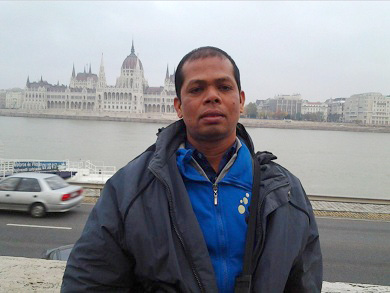The Concept of Suicide in Theravada Buddhism
Abstract
This study aims to describe the topic of suicide in the perspective of Theravada Buddhism using the literature review method. There are people holding the view of annihilation (vibhava-taṇhā) or craving for nonexistence, and they believe that suicide is the final solution to end the suffering. But The Buddha never taught to avoid suffering by committing suicide, and it will, for sure, not lead to liberation. Committing suicide will cause another chain of suffering and rebirth in the lower realm, even fall into endless cyclic existence (saṃsāra). That is why it goes “against the stream” of Buddhist moral teaching. The suicide was wrong because of the presence of desire or aversion accompanied by delusion (moha). The five precepts of the lay people (pañcasīla) and the pāṭimokkha of the monastic order, especially in the section of parajika, have clearly mentioned about the commitment to avoid killing. The idea of killing and suicide are inconsistent with the first precept of Pancasila and the Third precepts of patimokkha. The concept of suicide is inconsistent with Buddhist ideas in the precepts for monks, nuns, and laypeople, that is why we have to understand hiri and otappa, so that we have strong life guidelines in carrying out our daily life processes.
Keywords
Full Text:
PDFReferences
A.III.203., tr by Bhikkhu Sujato, Retrieved on 26 February 2019, https://suttacentral.net/an5.171/en/sujato
Afifuddin. (2012). Qualitative Research Methodology. Bandung: Faithful Library.
Andrew J. McCormick, “Buddhist Ethics and Eng-of-Life Care Decisions”, Journal of Social Work in End-of-Life & Palliative Care, Vol. 9, (2013): P. 210.
Barbara O’Brien. (2019). Thich Nhat Hanh's Five Mindfulness Trainings, Retrieved on 24 February, https://www.thoughtco.com/thich-nhat-hanhs-five-mindfulness-trainings-449601
Chamlong Disayavanish MD, MS., Primprao Disayavanish MA, Ph.D. (2007). “A Buddhist Approach to Suicide Prevention”, J Med Assoc Thai, 90 (8): 1681-1682.
D.II.330-332., tr by Bhikkhu Sujato. (2019). Retrieved on 26 February, https://suttacentral.net/dn23/en/sujato
Damien Keown. (1996). “Buddhism and Suicide: The Case of Channa”, Jurnal of Buddhist Ethics, Vol. 3 (March): p. 29-30.
Daniel A. Getz. (2019). Encyclopedia of Buddhism, Precepts, Retrieved on 26 February, https://www.encyclopedia.com/religion/encyclopedias-almanacs-transcripts-and-maps/precepts
Dh.XV.202. (2019). tr. by Harischandra Kaviratna, Retrieved on 24 February, http://www.onelittleangel.com/sacred/books/dhammapada.asp?mc=9#.
Ibid., p. 134.
Ibid., p. 673
Lester Kurtz (ed), Encyplopedia of Violence, Peace and Conflict, (San Diego: Academic Press), p. 212.
Martin G. Wiltshire. (1983). “The Suicide Problem in the Pali Canon”, The Journal of the International Association of Buddhist Studies, Vol.6, No.2,: 130-131.
Martin G. Wiltshire. (1983). “The Suicide Problem in the Pali Canon”, The Journal of the International Association of Buddhist Studies, opt.cit., p. 135
Matthew MacKenzie. (2017). The Oxford Handbook of Virtue: Buddhism and Virtues, (Online Publication, Dec), p. 1, Retrieved on 25 February 2019, https://www.academia.edu/35610469/Buddhism_and_the_Virtues
Oliver Leaman. (2000). Eastern Philosophy: Key Readings, (London and New York: Routledge, Taylor & Francis Group), p. 139.
op.cit. (2007). Chamlong Disayavanish MD, MS., Primprao Disayavanish MA, Ph.D., “A Buddhist Approach to Suicide Prevention”, J Med Assoc Thai: 1683.
op.cit., Rober E. Buswell, Jr. (ed), Encyclopedia of Buddhism, p. 262.
op.cit., Rober E. Buswell, Jr. (ed), Encyclopedia of Buddhism, p. 668.
Opt.cit., Andrew J. McCormick. (2013). “Buddhist Ethics and Eng-of-Life Care Decisions”, Journal of Social Work in End-of-Life & Palliative Care, Vol. 9, 212.
Pabongk Rinpoche. (1991). Liberation in the Palm of Your Hand, (Boston: Wisdom Publications,). p. 26.
Richard F. Gombrich. (2006). Theravada Buddhism: A Social history from ancient Benares to modern Colombo, (London and New York: Routledge & Kegan Paul Ltd), p. 66.
Rober E. Buswell, Jr. (ed), Encyclopedia of Buddhism, (New York: Macmillan Reference USA), p. 673.
Roy W. Perrett. (1996). “Buddhism, Euthanasia and the Sanctity of Life”, Journal of Medical Ethics, Vol. 22, (October): p. 310.
S.I.264., tr by Bhikkhu Sujato, Retrieved on 27 February 2019, https://suttacentral.net/sn4.23/en/sujato
S.III.119., tr by Bhikkhu Sujato, Retrieved on 27 February 2019, https://suttacentral.net/sn22.87/en/sujato
SN.V.456., tr by Sujato., Retrieved on 24 February 2019, https://suttacentral.net/sn56.48/en/sujato
Thich Nhat Hanh. (2019). Dharma Talk: Precepts as a Way of Life, Retrieved on 24 February, https://www.mindfulnessbell.org/archive/2016/03/dharma-talk-precepts-as-a-way-of-life-2
Thich Nhat Hanh. (2001). Freedom Wherever You Go, (California: Parallax Press), p. 15.
Vin tr. (2019). by Bhikkhu Brahmali, The Third Training Rule., Retrieved on 25 February, https://suttacentral.net/pli-tv-bu-vb-pj3/en/brahmali
Vin. (2019). tr by Thanissaro Bhikkhu., Retrieved on 25 February, https://www.accesstoinsight.org/tipitaka/vin/sv/bhikkhu-pati.html#pr
DOI: https://doi.org/10.33258/birci.v5i3.6815
Article Metrics
Abstract view : 56 timesPDF - 210 times
Refbacks
- There are currently no refbacks.

This work is licensed under a Creative Commons Attribution-ShareAlike 4.0 International License.

This work is licensed under a Creative Commons Attribution-ShareAlike 4.0 International License.

_.gif)

















_.gif)



